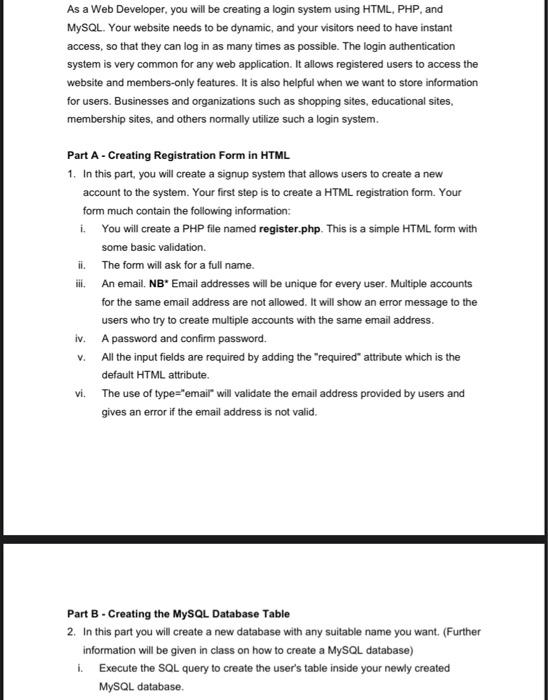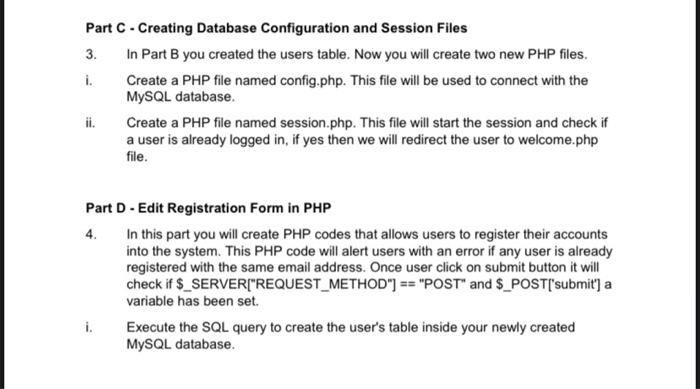As a Web Developer, you will be creating a login system using HTML, PHP, and MySQL. Your website needs to be dynamic, and your visitors need to have instant access, so that they can log in as many times as possible. The login authentication system is very common for any web application. It allows registered users to access the website and members-only features. It is also helpful when we want to store information for users. Businesses and organizations such as shopping sites, educational sites, membership sites, and others normally utilize such a login system. Part A - Creating Registration Form in HTML 1. In this part, you will create a signup system that allows users to create a new account to the system. Your first step is to create a HTML registration form. Your form much contain the following information: i. You will create a PHP file named register.php. This is a simple HTML form with some basic validation. ii. The form will ask for a full name. iii. An email. NB* Email addresses will be unique for every user. Multiple accounts for the same email address are not allowed. It will show an error message to the users who try to create multiple accounts with the same email address. iv. A password and confirm password. v. All the input fields are required by adding the "required" attribute which is the default HTML attribute. vi. The use of type="emair" will validate the email address provided by users and gives an error if the email address is not valid. Part B - Creating the MySQL Database Table 2. In this part you will create a new database with any suitable name you want. (Further information will be given in class on how to create a MySQL database) i. Execute the SQL query to create the user's table inside your newly created MySQL database. Part C - Creating Database Configuration and Session Files 3. In Part B you created the users table. Now you will create two new PHP files. i. Create a PHP file named config.php. This file will be used to connect with the MySQL database. ii. Create a PHP file named session.php. This file will start the session and check if a user is already logged in, if yes then we will redirect the user to welcome.php file. Part D - Edit Registration Form in PHP 4. In this part you will create PHP codes that allows users to register their accounts into the system. This PHP code will alert users with an error if any user is already registered with the same email address. Once user click on submit button it will check if \$_SERVER["REQUEST_METHOD"] == "POST" and \$_POST['submit'] a variable has been set. i. Execute the SQL query to create the user's table inside your newly created MySQL database








